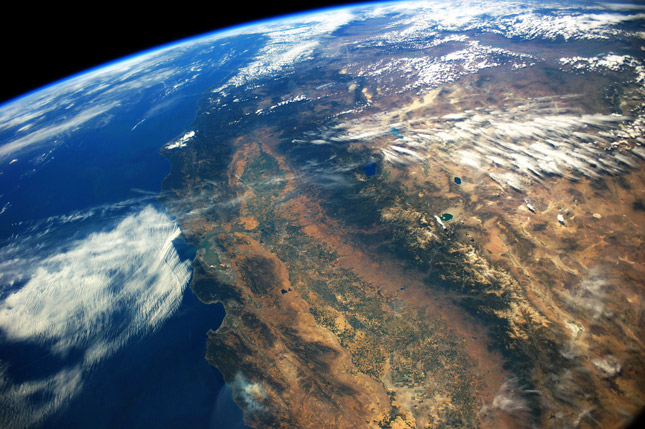First of two parts
Pray for Rain.
Mega-drought.
Winter Salmon Run Nearly Extinguished.
Sierra Snowpack Dismal.
These were headlines in California newspapers over the last five years during an historic drought that elevated water security to the top of everyone’s minds.
California’s relationship to water is unique in the United States, often becoming a major part of state and local power struggles. But even by those standards, water has become a greater concern in California politics over the past few years, a development that may be a harbinger of what is to come for much of the world.
With two-thirds of its precipitation falling in the north and roughly two-thirds of its population in the south, California relies on an intricately plumbed network of reservoirs, aqueducts, pipelines, and pumps as well as out-of-state imports to supply many different kinds of water users, including major urban centers, agriculture, and industry.
A major earthquake or failure of a dam or levee could have a profound impact on the water supply to regions hundreds of miles away.
In addition, both of the two major sources that feed the aqueduct systems, the Colorado River and Northern Sierras, are themselves strained by climate change, causing swings in their annual reliability.
California is working to adapt to changing conditions – including an unexpected and dramatically wet winter that has now pulled most of the state, including my own West Basin Municipal Water District, out of official drought status.
California could be a model for the kind of balanced water storage and conveyance systems that other cities, states, and nations are working toward around the world.
- What lessons have we learned?
- What still needs to be done?
A New Era
Prior to the worst drought in its recorded history, California took a fortuitous step. In September 2012, Gov. Brown signed AB 685, which made it the first state in the nation to guarantee universal access to safe water.
It declared that “every human being has the right to safe, clean, affordable, and accessible water,” and further solidified the state’s role in leading U.S. water policy.
Fast forward to 2014 when the drought’s effects were in full force, increasingly visible to all residents.
Gov. Brown made the case for conservation and future water sustainability.
Under the state Legislature he forged a bipartisan $7.12-billion statewide water bond that was overwhelmingly approved by voters in November.
Another milestone that year was the passage of legislation that required local agencies to establish sustainable groundwater management plans, a bit of catch up as California was the only state in the West that did not mandate the tracking of groundwater use up to that point.
West Basin produces five types of “designer” recycled water for different users
By the spring of 2015, the drought had become the No. 1 issue for citizens in statewide polls. No end was in sight.
Gov. Brown ordered a 25 percent reduction of potable urban water use, the first statewide mandatory cutback of water use for California. “People should realize we are in a new era,” Gov. Brown said during the announcement. “The idea of your nice little green grass that gets water every day, that’s going to be a thing of the past.”
The culmination of these events in less than two years set California on an urgent path toward developing new projects and plans to ensure not only water security for today’s users and conditions, but for future users and conditions.
(To be continued)
Mr. Houston, vice president of the board of directors of the West Basin Municipal Water District, may be contacted at info@scotthouston.org

